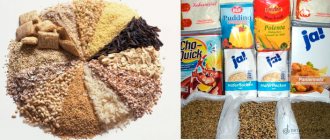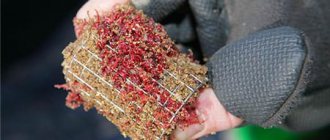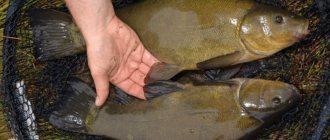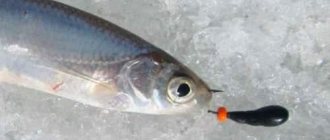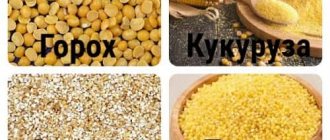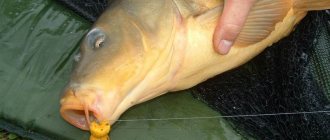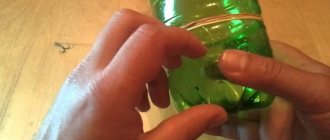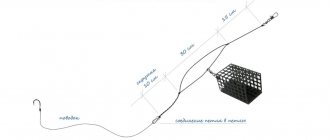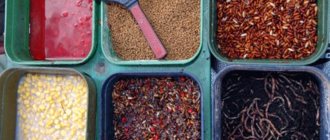Fishing... What do you associate this word with? An abundance of catch before a delicious dinner? Enjoying time outdoors with your favorite hobby? Or passionate excitement in anticipation of a bite?
No matter how differently fishermen imagine this type of activity, they all agree on one thing: good preparation is extremely important for successful fishing. What does it include?
Of course, it is very important to have a first-class comfortable spinning rod. A properly selected place where a large number of bites would live is also of considerable importance. And, of course, it is extremely important to prepare your own bait for fish, the recipes for which will be described below.
What is this bait? How to cook it? Do its main components need to be modified depending on different fish species? Let's find out.
Definition of the term
Bait is a one-time “feeding” of the water space to attract fish for the purpose of catching it. The purpose of the bait is not to saturate the fish, but to appetize it (to create an appetite and lure it to the fishing spot).
Universal do-it-yourself fish bait recipes contain:
- base (or main part);
- food supply (elements due to which the fish will remain in one place for a long time);
- additives (ingredients, thanks to which fish from all over the reservoir will rush to the fishing spot).
Let's take a closer look at these components.
The best bait for the feeder
Marcel Van Den Eynde Superfeed
Rating: 4.9
Feeder bait VDE Superfeed is a complex bait mixture suitable for quickly luring carp, bream, roach and other large fish from freshwater bodies to the casting point. Made on the basis of protein, it is coarsely ground and contains all the necessary nutrients for use without introducing impurities. However, combination with other compositions also brings good results: often they are even several times higher than the catch with basic bait.
Popular tests of the luring effect of VDE Superfeed show that the aromatic properties of the mixture can spread 100-200 meters from the casting point, that is, work over a large area. Often there is such a rush in the bait spot that the feeder bait is lost amid the flickering of large fish. However, its action lasts for a whole day, thanks to which fishermen have a real chance to catch a lot of trophies.
Advantages
- wide possibilities for mixing with branded products from Marcel Van Den Eynde;
- high activity (the first results are visible within 30 minutes after casting);
- wide range of bait operation;
- self-sufficiency;
- abundance of aromas.
Flaws
- high price.
Bait composition. The basis
This component must have some nutritional, taste and aromatic value in order to arouse the fish’s appetite.
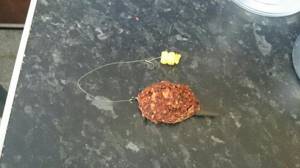
What exactly can the base be made from?
- Breadcrumbs (crushed to fine crumbs). You can prepare them yourself by lightly toasting wheat or rye bread. Here you can add some ground, inexpensive cookies (such as “Baked Milk”). However, it should be remembered that such sweetness glues the bait, so you can add it if you are going to fish in a fast river current.
- Makukha (cake after pressing sunflower seeds). This component should make up twenty percent of the entire base. Very effective in fast currents.
- Roasted seeds, crushed. They should be stored for one to two weeks. Can be used instead of makukha.
- Corn grits. Can be used in any form (boiled, raw, fried). The main thing is that this component makes up no more than forty percent of the amount of crackers.
- Flour (oat or barley). Should be no more than one third of the main element.
- Rippers (if fishing is carried out in still water). It can be bran, waffles, coconut flakes. The ratio of rippers to the total volume of the base should not exceed twenty to thirty percent.
Moistening bait with water
Typically, cold water is used to moisten the bait mixture, usually from the very reservoir in which fishing is planned. But cold water is quite insidious and only creates the illusion of quickly soaking all particles of bait. It’s good if the bait itself is homogeneous - say, it’s just breadcrumbs. But good bait for fish, especially large ones, is usually quite complex; in addition to the same crackers, there are various cakes and it is simply impossible to quickly and equally efficiently moisten all particles of the mixture. As a result, poorly moistened particles will tend to quickly replenish moisture, and will break away from the balls, float up and be carried away from the fishing zone by the current.
Some fishermen believe that it is enough to let the moistened bait mixture sit for 20 or even 10 minutes. But I am sure that when fishing in a current, especially a strong one, the bait must be moistened at least an hour before fishing, and even this consistency will not be able to firmly anchor itself on the river soil. The bait, which simply has to wait for the fish to approach, firmly clinging to the bottom already in a washed-out state, should be moistened with water 3-4 hours before the start of fishing. You can moisten the complementary food in 8-10 hours, but in this case the mixture, although perfectly saturated with water, can turn sour (especially when fishing in the hot summer), and this is no good. By the way, we cannot smell the beginning of the bait fermentation process with our human nose, but the fish instantly understands this and can ignore all our efforts.
The question immediately arises: what water is best for bait and where to get it?
After all, you shouldn’t come to a pond 4 hours in advance just to wet the bait? But there is water everywhere, and the most meticulous fishermen can moisten their bait with even the purest drinking bottle from a store-bought bottle, or even distilled water.
It is also important to speak out about the need to use clean water for bait. We regularly hear and read that the water flowing from our home taps is “death” for bait, as it contains chlorine. I once thought so too - bleach is not millet. But quite extensive experiments have convinced that water from a home tap is quite suitable for moistening bait, without in any way reducing the attractive properties for fish. Chlorine is, of course, present in our tap water, but in very small quantities. And the powerful range of taste and aromatic properties of the bait mixture completely absorbs the supply of bleach. But this is true, by the way. It never hurts to play it safe, and it’s easier to use the purest water, without any foreign odors, to moisten complementary foods.
Is it possible to speed up the process of moistening river bait?
You can, for this you only need warm (not hot) water, which will quickly saturate the entire mixture. How fast? At least five times faster, and after “simmering” for an hour, the complementary food will be ready to lie on the bottom of the river. Warm water also has another important advantage - it “cooks” many of the food ingredients, which is especially important for cakes, which in this case become more attractive to fish.
Bait composition. Feed elements
Good bait for fish, made with your own hands, should have a pleasant, attractive taste. What can be included in the food supply in order to win the favor of the fish?
First of all, it can be well-cooked peas, boiled barley, oatmeal, canned corn, freshly chopped worms, maggots, boiled millet, bloodworms.
What is the optimal ratio of the food supply to the total volume? Usually no more than forty percent.
What else can you consider when preparing it?
If fishing will take place in small reservoirs or in cold water in the fall, recipes for bait for fish (prepared with your own hands) may not contain nutritious food at all or it is recommended to reduce it.
Optional Add-ons
Recipes for the best bait for fish prepared with your own hands will certainly include additional elements that are not immutable, but affect the quality and properties of the bait itself. What are these voluntary supplements?
First of all, these include flavorings, which should be introduced into the feeding little by little and gradually, as they can reduce the bite to nothing. In cold water it is best not to use aromatic components, but in warm water you can safely experiment with various fragrant fragrances. Therefore, do not be afraid to add various types of flavorings to your homemade fish bait recipe in the summer. Thanks to such experiments, you will definitely find the optimal and most effective aromatic additives for yourself.
Interestingly, each fish reacts differently to odors. We will discuss below how this feature is taken into account in bait recipes for fish prepared by hand.
Another optional additive is coloring. It is very effective to use bait of different colors or the color of the bottom of the reservoir. How to achieve the desired coloring?
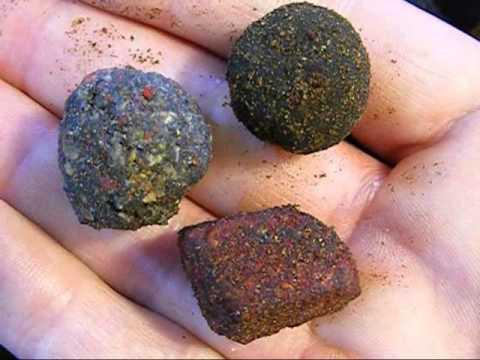
The easiest way is to choose the desired color of food coloring in the store. However, it can also be created at home.
For example, brown bait can be achieved by adding cocoa, and black color by adding soil.
And now about the main thing - what kind of bait should you prepare in order to please yourself with an abundant, first-class catch?
Cereal baits
As we have seen, the base of the bait most often consists of breadcrumbs, flour and seeds. What can you say about different types of cereals?
For example, how to make your own recipes for bait for fish from semolina? There are at least a dozen effective ways. Let's get to know some of them.
Semolina with sweet syrup. Combine two chicken eggs and eighty grams of syrup of any flavor, add semolina and flour in equal parts so that viscous balls are obtained.
Semolina with sunflower oil. Boil the semolina, mash until smooth and mix with three tablespoons of butter.
You can also mix semolina and corn grits in equal quantities and boil. Other effective recipes consist of boiled semolina with the addition of various ingredients: breadcrumbs (about forty grams), cinnamon (two teaspoons) or honey (fifty grams).
Another important bait ingredient can be pearl barley. Recipes for bait for fish prepared with your own hands with the addition of this component are below.
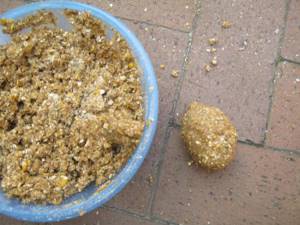
Pearl barley with millet. Take cereals in equal quantities (three hundred grams each) and cook in two liters of water for about an hour, adding salt and sugar to taste. After preparing the porridge, you need to put vegetable oil (about one hundred grams) in it. In the same way, you can prepare a mixture of pearl barley with peas and corn porridge.
Also very effective are recipes for boiled pearl barley (three hundred grams) with the addition of honey (sixty grams), cinnamon (one teaspoon), garlic (one head), berries (one hundred grams) or food coloring (one pack).
Lures for various types of fish
Below are recipes for homemade bait for carp fish.
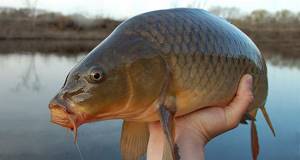
The first recipe: take two kilograms of breadcrumbs, four hundred grams of fried and crushed hemp seeds and wheat bran, two hundred grams of oat bran, uncooked millet, pearl barley, oat flakes, corn and soy flour, one hundred grams of milk powder.
The second method of preparing bait includes a mixture of the following components: two kilograms of corn grits, two hundred grams of ground peanuts, a kilogram of semolina, half a kilogram of pet food, flour and any cereal, four hundred grams of milk powder and three hundred grams of sugar.
In the form of flavoring (no more than twenty grams), it is best to add anise oil, chopped dill, vanilla, and caramel.
And here are easy recipes for homemade bait for bream fish.
First option. Take three kilograms of millet, half a kilogram of breadcrumbs and crushed sunflower seeds, four hundred grams of small bloodworms, one hundred fifty grams of milk powder, one hundred grams of steamed hemp seeds, fifty grams of gammarus, twenty vanillin, fifteen anise oil, ten caramel.
The second option involves a mixture of components from one kilogram of breadcrumbs, three hundred grams of fried crushed seeds, four hundred grams of bran and boiled millet.
You can add ten to fifteen grams of garlic, coriander, and cinnamon as an attractive flavoring.
Let's look at homemade bait recipes for river fish (for crucian carp, for example).
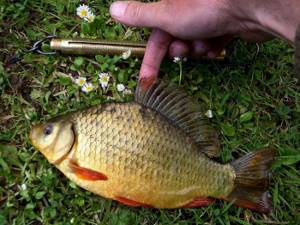
For one kilogram of breadcrumbs and half a kilogram of boiled crumbly millet, it is recommended to take three hundred grams of crushed fried seeds and two hundred and fifty grams of Hercules porridge.
Or you can add half a kilogram of ground fried seeds and wheat bran to one kilogram of breadcrumbs.
All this should be seasoned with ten to twenty grams of aromatic additives: grated garlic, sugar or vanilla.
Now let's find out if there are separate bait recipes for the feeder.
Lures and bottom tackle
A feeder is a special way of catching fish with a bottom rod. What is he?
In short, a feeder is a piece of equipment with a feeder, thanks to which you can fish out fish from the bottom of a reservoir. As you can see, the main factor in catching a catch is attracting fish to the location of the fishing rod. To do this, it is important to use the most effective and efficient, home-made fish bait (for the feeder). What should you consider during the preparation process?
First of all, you should pay attention to the amount of bait. If you are going to fish in warm water for four to five hours, then it is best to take bait weighing from four to six kilograms. If fishing is planned in the cold season, then two or three kilograms should be enough.
Another important factor in quality feeder fishing is the color of the bait. Here, too, it is best to focus on the time of year.
In winter, the color of the ingredients should be harmoniously combined with the bottom of the reservoir, and in summer a completely different principle applies - the more color contrasts, the better. How can this be achieved?
Pastoncino can be added to the base of the bait - specially crushed biscuit crumbs, painted in all the colors of the rainbow. This element has positive properties - it does not saturate the fish and does not absorb moisture for a long time.
An important condition for fishing with a bottom fishing rod is the adhesive substances added to the bait. They make it viscous, so it doesn’t immediately fall apart.
The most effective astringent is the plant protein PV-1, which must be added at a rate of no more than ten percent by weight of the mixture. Cheaper adhesives are steamed oatmeal and pearl barley.
If fishing is carried out at a depth of more than eight meters, then it is recommended to add weighting substances, for example, gravel, to the feeder.
What exactly will the bait consist of?
You can use not only breadcrumbs as a basis, but also crushed cookies, waffles, and seeds. Their ratio to the total weight of the mixture should not exceed sixty percent.
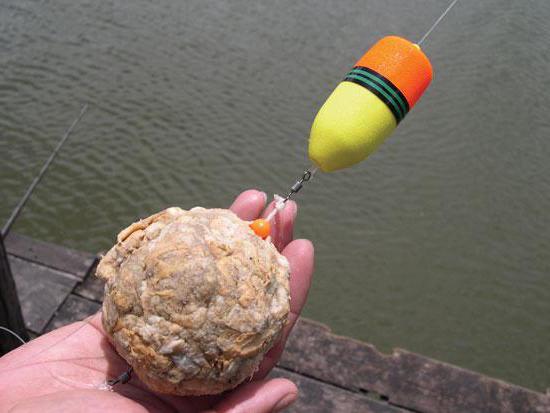
Feed components may include boiled corn, cereals (barley, millet), peas, worms, chopped potatoes.
To bind the components, you can take baby food. If you are going to fish in still water, be sure to add pop or regular aspirin.
Regarding the combination of bait, you can take the following rule: if the current is weak, the depth does not exceed ten meters, then the mixture should be crumbly, but if the current is quite strong and the depth exceeds eleven meters, then the bait should be viscous.
So, we have learned what components homemade fish bait should consist of (recipes for fish bait are given above). Now let's talk about the best way to knead the main components.
What does homemade bait consist of?
The bulk
The base takes up half or more of the total mass of the bait.
The basis of the bait is the edible part for the fish; in most cases, the following materials are used for the base:
- Bread crumbs;
- Breadcrumbs;
- Flour from various grains;
- Hemp seeds.
To make small crackers, it is advisable to use brown bread crumbs, since this type of bread has a richer aroma than white or rye. If you are making crackers from white bread, you need to fry it on the stove until golden brown.
Good to know! If several types of base are used when preparing bait, crackers take up 20% of the total bait. Crackers take up half the mass of the entire bait if they are the basis.
An effective technique when catching peaceful fish of the order of caps is the addition of milk cookies. This will give the bait an additional aroma and taste that this subspecies cannot resist.
Hemp seeds are an effective basis for feeding roach, bream or bream. Roasted and crushed seeds have a white tint; they are added ½ of the mass of crackers.
Ground cereals are used as a base for preparing bait. Each grain attracts a different type of fish. In finished complementary foods it takes up 2/4 of the weight of crackers.
Cereals made from corn, peas and pearl barley are used in steamed, fried and natural (raw) form. Corn is added when fishing for carp species (carp, crucian carp), peas attract bream and bream, pearl barley is loved by roach.
In addition to the base, you need to add rippers, which is especially important when fishing in standing waters. So that the porridge does not remain in the feeder of the tackle.
Rippers include:
- Coconut flakes;
- Cake;
- Cake;
- Bran.
Feed elements
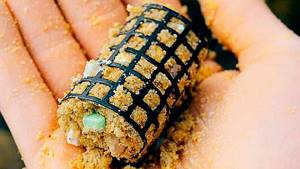
The stern part of the complementary food is made up of exactly what the fish will feed on. This element of the porridge attracts and keeps fish in the fishing spot.
In the absence or inappropriate food supply, it loses interest and quickly moves away from the feeding area. The stern part should occupy 4/10 of the base.
To create the stern, the following elements are used:
- Canned or boiled corn;
- Whole boiled peas;
- Hercules or oatmeal flakes;
- Earthworm;
- Maggot;
- Bloodworm.
Based on this, we can conclude that it is advisable to use as a feed additive what we directly fish with and attach to hooks.
As a supplement to the food supply, they also use:
- Fish bone meal;
- Crushed sunflower seeds;
- Powdered milk;
- Chopped peanuts.
Flavors and Additives
This element of complementary food serves to attract aquatic inhabitants to taste. Aromatic elements, as well as elements of the base and food supply, in most cases attract a certain subspecies of fish.
It is worth considering that fishing in the winter often does not require, or even prohibits, the use of any aromatic elements, which can lead to a cessation of the bite in general. Fishing the rest of the time welcomes the use of flavors.
The following elements can be used as flavoring agents:
- Garlic;
- Anise and camphor oil;
- Valerian tincture;
- Cocoa or coffee;
- Greens (dill, coriander, parsley, basil, etc.);
- Branded flavors (strawberry, caramel, tutti-frutti, vanilla).
| Fish | Suitable aroma element |
| Universal fragrances | Branded aromas, cocoa, coffee. |
| crucian carp | Garlic, black currant leaves. |
| Carp | Vanilla, caramel, anise oil, dill. |
| Bream and white bream | Garlic, cinnamon, honey, basil, coriander. |
| Roach | Cinnamon, camphor oil. |
Other optional additives include:
- Dyes (cocoa, flour, food coloring)
- Flavoring additives (coffee, salt, fish bone meal);
- Nutritious (peanuts, dry cream or milk);
- Adhesive additives (starch, baby food).
Cooking instructions
An important nuance of homemade bait recipes for fish is that the mixture should mold well into a single ball, which would break up into small particles not when it gets into the water, but when it sinks to the bottom. What does that require?
First of all, you should remember that mixing the bait must be done in the evening so that each component can be well saturated with water and become more mobile.
Here's the step-by-step plan:
- Pour all ingredients into a large bucket with hard walls and mix thoroughly. You can use a screwdriver or a construction mixer.
- Add water to the mixture at the rate of 250-300 milliliters of liquid per kilogram of composition. It should be added a little at a time, stirring regularly.
- Let the mixture sit for about 10-15 minutes.
- Carry out a test - form a ball from the bait. If it turns out dense and solid, then leave the composition until the morning. If the lump crumbles and crumbles, then move on to the fifth point.
- Add another 100-150 ml of water, this must be done by spraying.
- Fifteen minutes later the test is carried out again.
- Before throwing in the bait (if necessary), you can moisten it a little again.
Feeding fish for a good bite
Anglers often justify the lack of a bite either by a change in the weather, or by the fact that the fish have already eaten. But usually such explanations are not true. How can you make sure that fish are caught using bait?
In fact, the bite stops or does not start at all due to fishermen’s mistakes in feeding tactics, or due to a small amount of bait.
How to feed correctly
Typically the feeding pattern looks like this.
- At the beginning of fishing, a starting feeding is performed in the amount of two-thirds of the total bait.
- The rest of the bait is supplemented during the process. This makes it possible to attract fish from a large area and hold them for a long time without oversaturating them.
This is a classic option that can be changed by the fisherman himself, depending on the fishing conditions. Which supplementary feeding option is correct is the most difficult question when fishing. Let's look at it in more detail
Recommendations for supplementation
Typically, sports feeding means that after the starting feeding, additional feeding is not done for about 20 minutes. During this time, a school of fish on the bait is formed, and at this time they are not frightened by tossing the next ball. But of course there are no clear rules. Methods of supplementary feeding will completely depend on the type of fish, its activity, and the time of approach to the fishing point.
For amateur fishing, it is better not to catch fish at all after feeding, but to give the school the opportunity to form calmly, otherwise an accidental loss of fish from the hook can seriously complicate matters. During competitions, time is limited, and you need to make the most of it.
Casting accuracy is important
Supplementary food during the fishing process is also supplied as accurately as possible. This is extremely important. Spot feeding supports high competition of fish for food at the fishing point, which means intense biting is ensured. If the bait is scattered over the area, then the fish will scatter in the same way, and you will have to wait a long time for a bite.
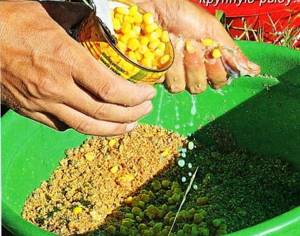
What composition
Calorie and living components (worms, bloodworms, maggots) are introduced to a minimum into the massive starting part.
At the same time, a small part of the bait is made, into which a much larger amount of live food is introduced. This enriched part is thrown as accurately as possible to the fishing point; it should, as it were, stand out from the general carpet of bait. This is one of the methods of attracting fish to the hook.
Small additional feeding parts are enriched with animal components at the discretion of the fisherman. Sometimes it is most effective to feed pure maggots or bloodworms...
Rate of supplementary feeding of active fish
During the fishing process, you need to carefully monitor the activity of the fish. Usually the bite is intense at the beginning, gradually weakens and then fades away. Many fishermen find a notorious reason for this phenomenon - “the fish have eaten too much.”
In fact, the fish ate the food and began to gradually move away “out of boredom.” In order not to let things get to this point, you need to start the supplementary feeding process in a timely manner. At the same time, the volume of bait and the frequency of its throwing are of decisive importance.
If the fish “responds” to a thrown piece of bait with a quick bite, it means it is active and you need to set a high rate of additional feeding.
If the fish is inactive - feeding methods
But the fisherman more often has to deal with inactive fish. And you need to find a compromise between two extreme situations:
- the fish loses interest and leaves because there is not enough bait;
- the fish gets scared and avoids frequent additional feeding with balls.
Two methods of supplementary feeding are used:
- in very small lumps, but often;
- rare, but into a few decent balls.
Let's look at these methods in more detail for different types of fish.
For measured roach
Roach requires starting feeding and precise selection of the rate of supplementary feeding. From half to 2/3 of all bait is spent on the “start”. With roach, the difficulty of choosing the rate of supplementary feeding is manifested to a greater extent.
The flock either loses interest and leaves, or the roach gets scared by the falling lumps (which is probably why the roach is called a sport fish).
There is an average recommendation - supplementary feeding is carried out with a ball of chicken egg thrown every 10 - 15 minutes. If this method does not work well, then the bait is made as thick as possible with bloodworms and very small balls of bait are formed, which do not frighten the fish much.
For bream and silver bream
Here the situation is somewhat simpler compared to roach. The main thing is to attract bream to the fishing point. The starter feed should include two-thirds of the total bait. The rest is added in portions of several balls at long intervals - sometimes up to one hour.
The bream on the river is afraid of additional feeding, but does not move far and returns back.
If the bream is active, you can use more intensive feeding, similar to feeding roach. Throw in a small ball with a large amount of bloodworms or maggots every 15 minutes.
If the bite is interrupted due to an accidental frightening of the school by a fish that has come off the hook, you can feed several balls and take a break, after which the fish that has calmed down and returned will probably show itself again. Similar tactics can be used for catching silver bream and crucian carp on the river. With small variations - you need to adapt to the mood of the fish.
Feeding for bleak and other small riding fish
Starter feeding is practically not done, sometimes only one tenth of the bait. The bait is thrown in small lumps, the size of a hazelnut, to the fishing point, forming a column of turbidity from it. It is in this pillar that small fish will concentrate.
To attract fish and form a feeding field, lumps are thrown in an amount of 2 - 3 per minute. If the fish approaches and begins to be actively caught, then the rate of bait increases to 5 lumps of bait per minute, or with a frequency of one fish caught - one lump.
Feeding carp and crucian carp in the pond
Everything here is both very simple and very complex at the same time. The fact is that carp and crucian carp at headquarters are very cautious and suspicious, and usually react negatively to heavy supplementary feeding. Therefore, the tactics for feeding this fish are very simple. At the beginning of fishing, all the bait is thrown into the water, which is not very nutritious, with a minimum of living components.
But the difficulty lies in something else that is not directly related to bait. If the place is chosen poorly and the carp does not visit it, then all the bait will be wasted. There will still be no fish in this place, no matter how much you feed. Therefore, for fishing for carp and crucian carp, it is advisable to have a double set of food components. If a mistake was made when choosing a place, then there will be a chance to start fishing again.

Supplementary feeding of carp
During the fishing process, carp are fed only with individual grains of corn, pearl barley or maggot, i.e. the most nutritious and attractive food for him. In this case, one portion should be very small - 5 - 6 grains or larvae.
But the frequency of such additional feeding can be high - up to one cast per minute.
With crucian carp, the situation with additional feeding may have options, depending on the reservoir and the capriciousness (or rather, satiety) of the crucian carp in it. There are cases that crucian carp, like carp, is responsive to the caloric composition. In other places, a few added pearl barley grains completely destroy the bite of crucian carp for a couple of hours. Therefore, you need to adapt to crucian carp in a specific place.
How to throw light small portions at a rate
The problems with supplementary feeding with small and light particles are to ensure that the feed is delivered over significant distances, exactly to the place of fishing. To solve the problem, a slingshot is used and weighting of the thrown feed is used, by forming very small balls of fine-grained feed with grain inside. For grains, special adhesives (commercially available) are used, with which you can form a lump. You need to practice this at home. You can simply use a little semolina with dry milk - a very sticky thing when used correctly.
But for short distances with a fly rod, it is quite possible to learn how to shoot several grains of pearl barley or corn into the fishing zone with a snap of your fingers.
How scared are fish when fed?
You can scare away medium and large fish with the noise from the fall of additional bait balls, but in most cases (with the exception of carp and crucian carp), this temporary fright of the fish quickly passes and it returns. The return is especially fast for active river fish. She ultimately reacts completely positively to the balls.
Regarding carp and crucian carp, as was said, throwing balls during the fishing process will most likely lead to the cessation of biting. Perhaps it’s not so much a matter of fear as a matter of the fish switching to a new style of behavior due to the arrival of new food, when life is not hungry without it... which requires study...
When a large ball falls, small fish often do not react at all. She moves away and stops biting if a larger food competitor approaches the bait. But, contrary to popular belief, she is not at all afraid of the pike, which knows how to hide and not be noticeable. Pike can even tear off the catch along with the fishing line, but the bite does not weaken because of this.
Rules for feeding
- Bream and roach are very picky about the composition of baits. To catch this fish, you need to select bait for a specific body of water.
- The worms are cut just before feeding. They are added to the bait and cut with scissors in a jar.
- For fishing in the current, more moistened bait is used, knocked into dense balls.
- Large light granules, against the background of a bait spot, attract large fish well.

